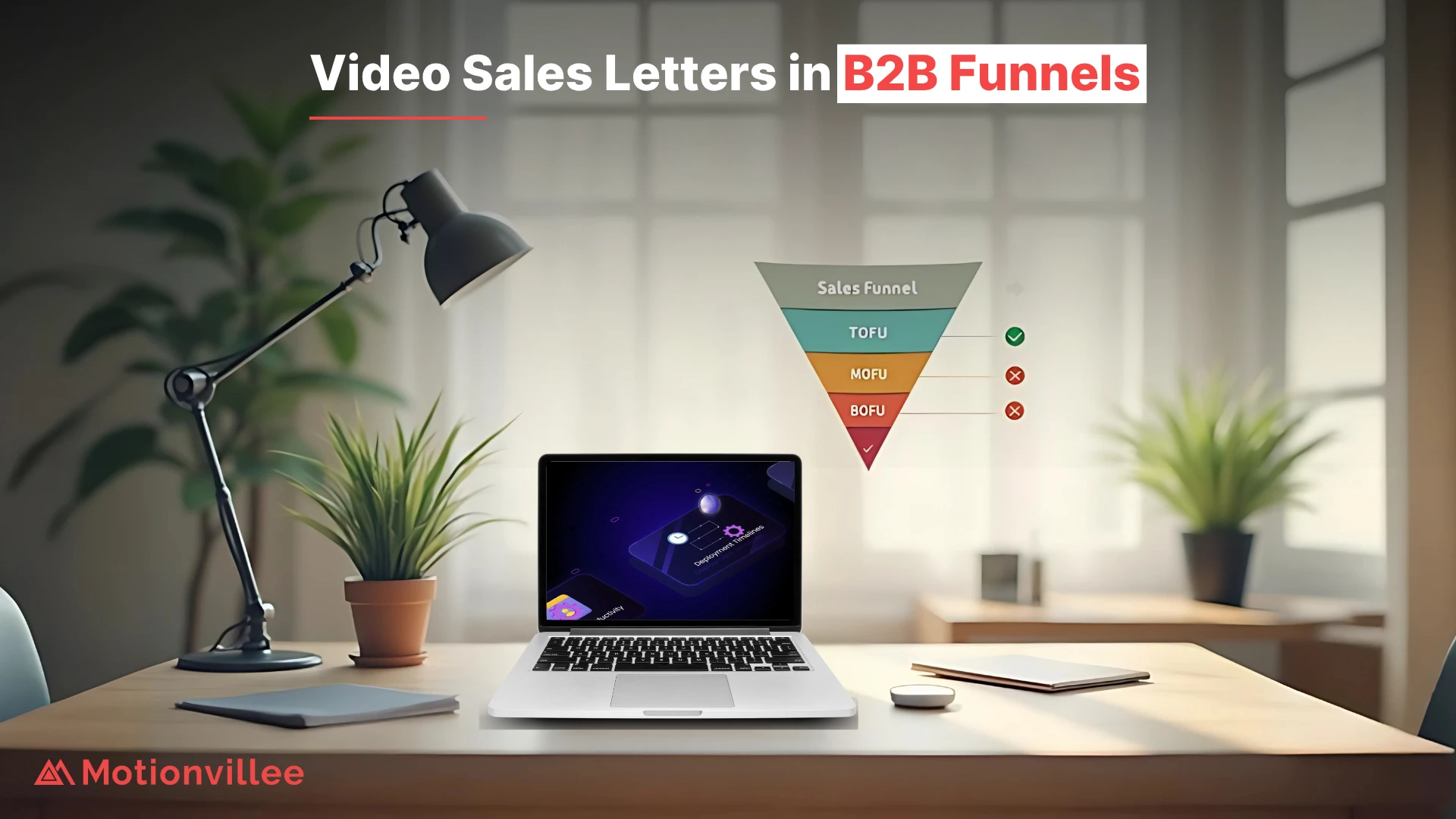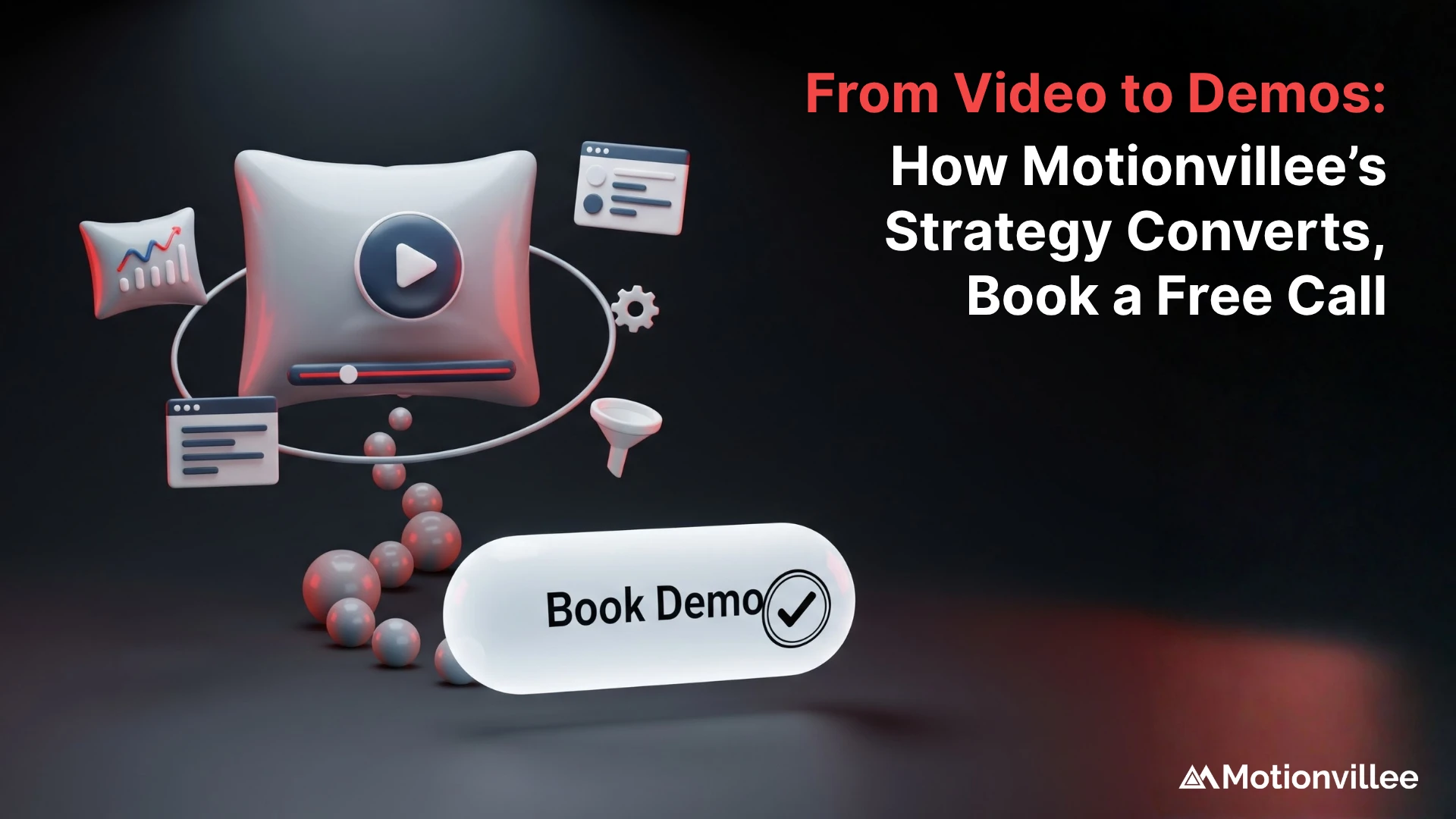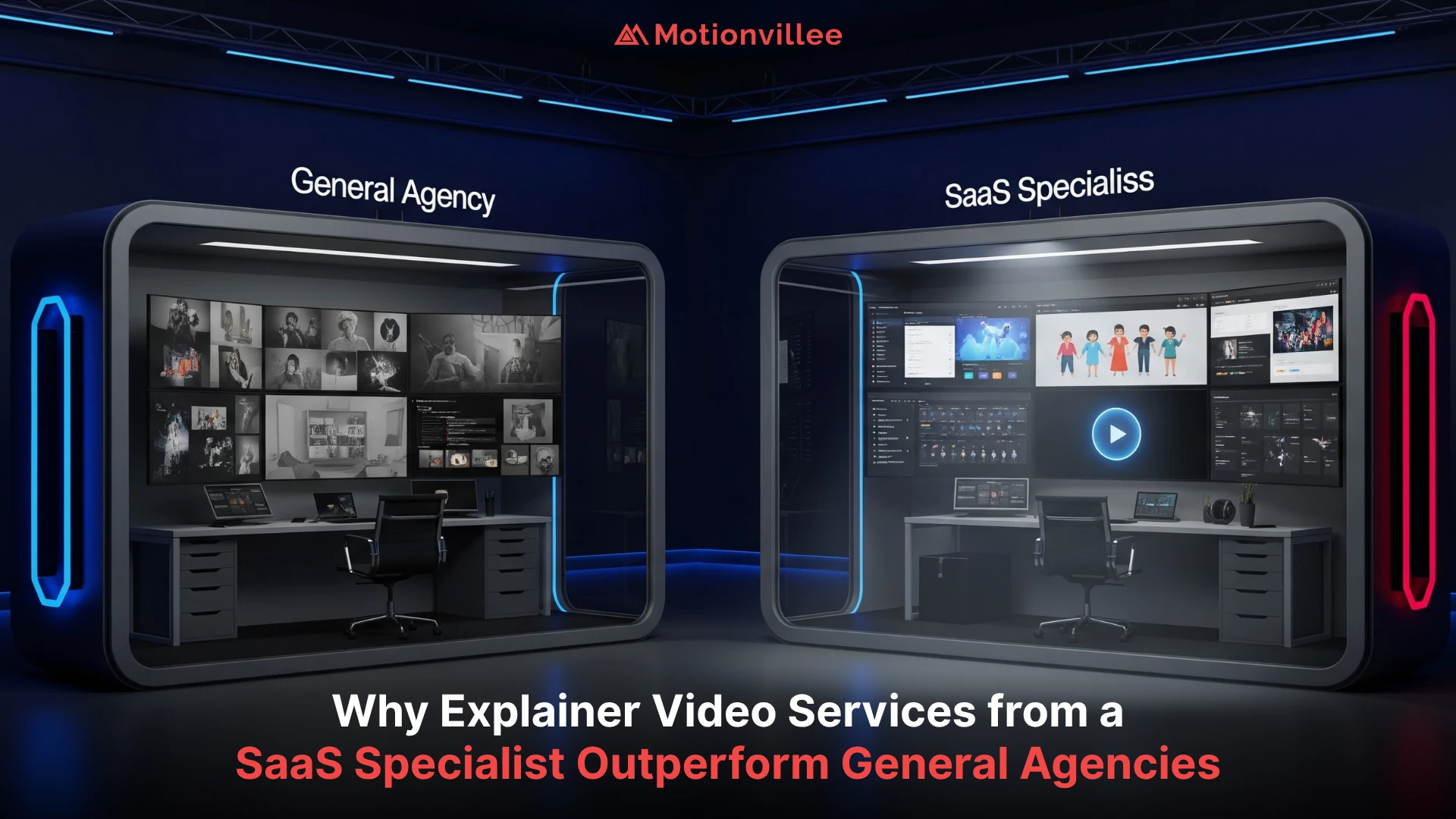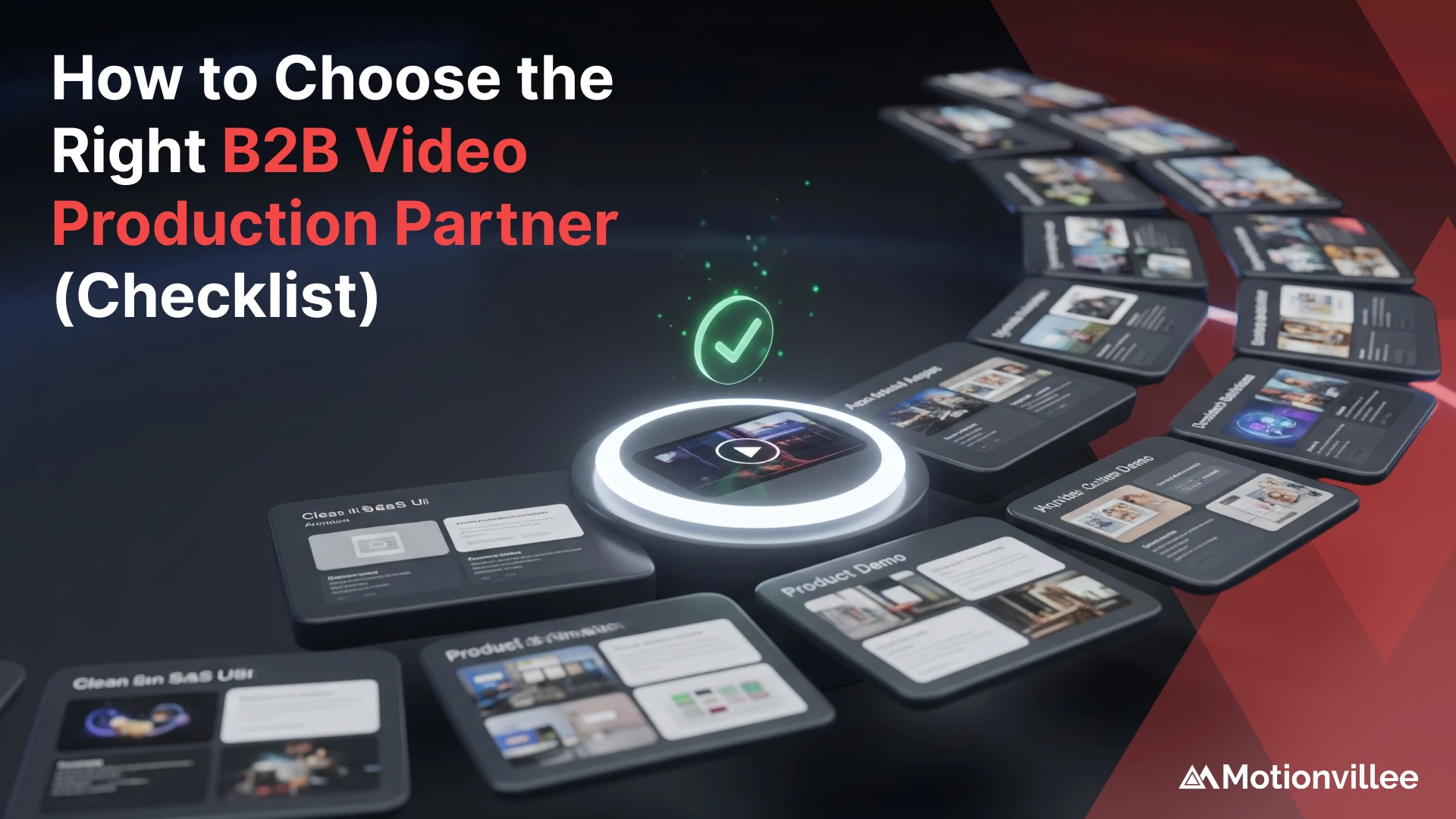Video Sales Letters in B2B Funnels can be a game changer when used in the right context. Unlike quick explainer clips, VSLs dive deep into your offer and guide prospects through a full narrative journey. When done well, they build trust and drive high-value conversions.
In this post, you’ll learn:
- When to use VSLs: Identify the funnel stages where long-form video shines
- Why VSLs fail: Common pitfalls that derail engagement and reduce ROI
- Better alternatives: Shorter, targeted video formats to try instead
By the end, you will have a clear framework for choosing the right video type at each stage of your B2B funnel. Next, we’ll start by defining exactly what a VSL is and when it makes sense to include one in your marketing mix.
What Is a Video Sales Letter (VSL)?
If you’ve ever wondered what is a vsl, it is a long-form video designed to pitch your product or service in a conversational, persuasive way. Unlike short explainer clips, a VSL walks viewers through your full message, from problem to solution, using structured storytelling.
Core elements of a VSL:
- Hook: A strong opening that grabs attention in the first 5 to 10 seconds
- Value narrative: Clear explanation of benefits and features that solve the viewer’s problem
- Social proof: Customer testimonials, case study highlights, or expert endorsements to build trust
- Call to action (CTA): A specific, benefit-driven next step such as “Book a demo” or “Download the guide”
VSLs work best at the mid-funnel and for high-value offers:
- Mid-funnel: Prospects know their problem and seek deeper insights before requesting a demo
- High-value deals: When the purchase requires multiple stakeholders or a significant investment
Use a VSL when you need more than a quick overview. It gives you space to address objections, share proof, and guide serious prospects toward a decision. In the next section, we’ll explore the situations where VSLs deliver the strongest results.

When VSLs Drive Results
Video Sales Letters in B2B Funnels can boost conversions when you need to explain complex solutions or justify high-ticket investments. In these cases, prospects are looking for more than a quick overview, they want an in-depth walkthrough that addresses questions and highlights value.
VSLs shine in two main scenarios:
- Deep-dive demos for complex solutions: Use a VSL to show detailed workflows, integrations, or technical workflows. This helps buyers understand how your product fits into their environment.
- High-ticket deals with longer consideration cycles: When deals require multiple approvals or significant budget, a well-crafted VSL provides the persuasive narrative and social proof buyers need to move forward.
For effective vsl marketing, follow these tips:
- Keep scripts tight: Focus every line on a specific benefit or objection. Avoid filler content to maintain viewer interest.
- Polish production: Use clean visuals, clear audio, and professional editing to build trust. Amateur mistakes can undermine credibility.
- Include real examples: Embed customer quotes or case study snippets to reinforce your claims.
- Use clear CTAs: Repeat your call to action at natural intervals, such as after key proof points and at the end.
Why VSLs Sometimes Miss the Mark
A vsl for b2b can be powerful, but it also has pitfalls that hurt performance. Understanding these issues helps you decide when a VSL is not the right choice.
Common reasons VSLs fall flat:
- Too long or too salesy for early-stage leads
Prospects at the top of the funnel want quick insights, not a 10-minute pitch. Overly promotional content can turn them off before they learn anything useful. - Weak storytelling or low production value
A script that lacks a clear narrative or a video with poor audio and visuals undermines your credibility. Viewers expect professional quality and a coherent story. - Mismatched CTA or lack of segmentation
A one-size-fits-all call to action does not speak to different audiences or funnel stages. If you send all viewers to a demo request, you lose those who are not yet ready.
How to avoid these pitfalls:
- Match length to stage: Use shorter videos for awareness and reserve VSLs for mid- or bottom-funnel prospects.
- Invest in quality: Hire a professional team for scripting, filming, and editing to ensure a polished result.
- Segment your audience: Customize your CTA and even your VSL version for different buyer personas and stages.
By spotting these missteps early, you can choose the right format or refine your VSL for better results. Next, we’ll explore alternative video formats that work when a VSL does not.

Alternative Video Formats for Each Funnel Stage
When a VSL does not fit your prospect’s needs, you can turn to other video types to guide them through each stage of the B2B funnel. Choose the right format to match your audience’s readiness and attention span.
- Explainer Clips: Quick, 60- to 90-second overviews that introduce your solution and build awareness. These work well at the top of the funnel. For expert help, explore our explainer video services for B2B to craft concise, engaging clips.
- Interactive Product Demos: On-demand tours that let viewers click through features at their own pace. Ideal for the evaluation stage, these demos show real workflows and collect engagement data to inform follow-up.
- Personalized Video Messages: Short, one-to-one clips sent directly to key decision makers. Use these at the decision stage to address specific concerns and build rapport with a personal touch.
- Live Webinars & Q&A: Real-time sessions where you demonstrate your solution, answer questions, and handle objections. Webinars are perfect for late-stage prospects who need proof of expertise and direct interaction.
By selecting the right video format for each funnel stage, you deliver the right message at the right time and boost engagement and conversions. Next, we’ll help you choose the best format with a simple decision guide.
Choosing the Right Format: A Decision Guide
When evaluating Video Sales Letters in B2B Funnels, it helps to use a clear checklist to match your goals and audience to the ideal video type. Below is a simple guide to make the right choice quickly:
1. Define Your Goal
- Awareness or education → Explainer Clips
- Detailed evaluation → Interactive Product Demos
- Personalized outreach → One-to-One Video Messages
- Objection handling and trust building → Live Webinars & Q&A
- Conversion for high-value deals → VSLs
2. Assess Your Audience
- Top-of-funnel prospects with limited time → Keep videos under 90 seconds
- Mid-funnel evaluators needing deeper detail → Offer clickable demos or VSLs
- Decision makers who value personal touches → Send custom video messages
3. Check Resources and Timeline
- Limited budget or staff → Start with short explainer clips
- Strong internal expertise → Host your own webinars
- Need quick turnaround → Use templated, interactive demos
Examples of Successful Format Swaps
- Replaced a 10-minute VSL with a 60-second explainer clip and increased engagement by 30 percent
- Added personalized video messages after a product demo and doubled meeting requests
- Switched from recorded demos to live Q&A sessions and cut time-to-close by two weeks
Use this decision guide to select the format that fits your next campaign. Next, we’ll share best practices to ensure every video you produce performs at its best.

Best Practices for All B2B Video Content
No matter which format you choose, these core guidelines ensure your videos engage and convert:
1. Script for Clarity
- Keep your opening under 10 seconds to hook viewers
- Use simple language and avoid jargon
- Break complex ideas into short, focused segments
2. Optimize for Sound-Off Viewing
- Add accurate captions or subtitles so viewers follow along without audio
- Use on-screen text and graphics to reinforce key points
- Choose clear visual cues that work in muted environments
3. Use Clear, Benefit-Driven CTAs
- State exactly what you want viewers to do next, for example “Schedule a demo” or “Download the guide”
- Highlight the value, such as “Get instant insights” or “Save 20 percent on billing”
- Place CTAs at both the midpoint and end of longer videos
4. Design for Mobile First
- Frame shots for vertical or square formats when targeting mobile feeds
- Use large, legible text and buttons that stand out on small screens
- Test playback across devices to ensure a smooth experience
5. Maintain Brand Consistency
- Use your brand colors, fonts, and logo placements in every video
- Keep a consistent tone and style across all formats
- Reinforce your positioning by repeating key phrases or taglines
By following these best practices you create videos that capture attention, communicate value clearly, and guide prospects toward the next step.
Next Steps: Optimize Your Video Funnel
Now it’s time to review and fine-tune your video strategy. Use this quick checklist to audit your current content:
- Map formats to stages: Ensure you have explainer clips at the top, demos in the middle, and VSLs or personalized messages at the bottom
- Check performance: Review view rates, engagement, and click-through metrics for each video
- Test alternatives: Swap out underperforming VSLs with shorter explainer clips or interactive demos
- Verify accessibility: Add captions and clear CTAs to all videos
- Align branding: Confirm consistent style, tone, and messaging across your library
Ready to take your funnel to the next level? Get in Touch to tailor your approach with Motionvillee’s expertise in product demo video production and more. Let’s build a video strategy that drives engagement and boosts conversions in your B2B funnel.







